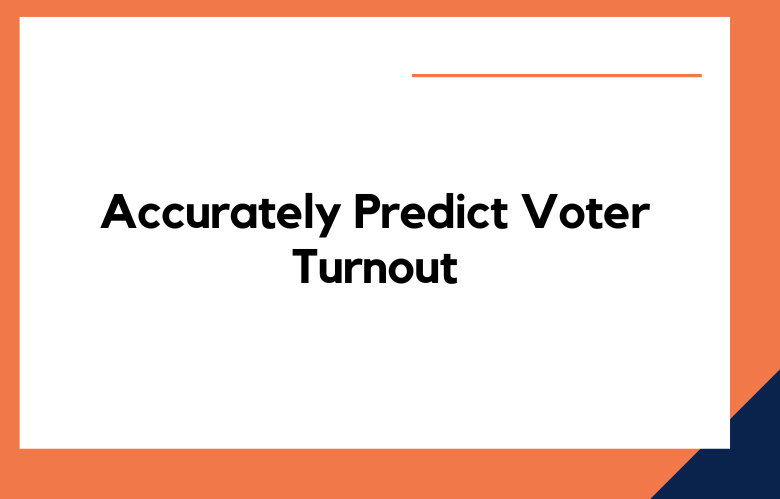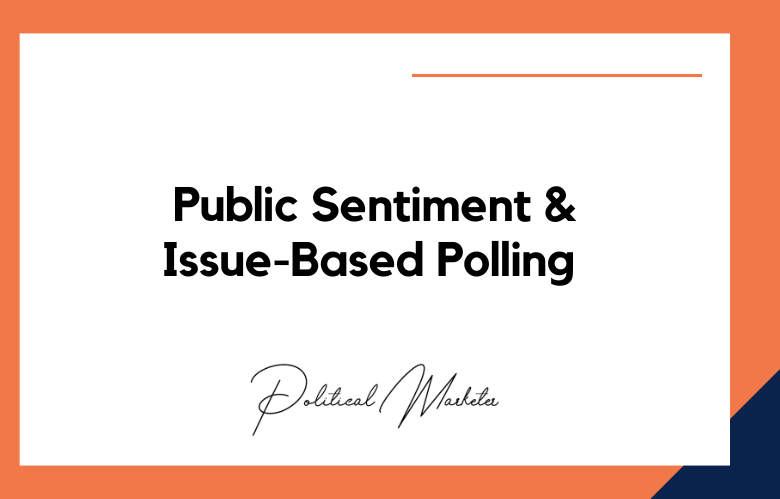Elections are a vital part of any democratic country. They provide citizens an opportunity to choose the leaders that represent them. However, voter turnout remains a concern in many countries, including the United States.
While various factors can affect voter turnout, predictive models can help anticipate turnout rates, allowing for more efficient campaigning strategies. This post will examine different models that can predict voter turnout.
What Models Can Accurately Predict Voter Turnout?
Demographic Models:
These models use demographic information, such as age, gender, race, and education, to predict turnout. One widely used model is the Census Bureau’s Voting and Registration Supplement (VRS), which surveys millions of Americans about their voting behavior. The VRS model accurately predicted voter turnout in the 2020 Presidential election. This model can also help target specific voter demographics.
Polling Models:
Polling is an effective method of predicting turnout because it gauges the public’s mood. It can indicate how likely voters are to cast ballots. A notable example of a polling model is called the Likely Voter Model. This model estimates the likelihood of voter turnout by asking whether a voter is registered to vote, how often they vote in elections, and how interested they are in politics.
Social Media Models:
Social media use has increased significantly over the years, and campaigns can utilize this for outreach. Social media models can predict turnout based on interactions on social media platforms. They can study comments, likes, and shares to calculate engagement levels. In the 2016 election, a social media model correctly predicted voter turnout in 24 26 primary contests.
Machine Learning Models:
This model is a form of artificial intelligence that uses statistical algorithms to analyze data. It can predict voter turnout by analyzing voter history and other features such as polling data and social media interactions. It can account for unpredictable factors that may affect voter behavior.
Election Day Models:
Election day models gather data on voting patterns to predict election results. These models use exit polls, information from official vote counters, and pre-election polling data. Election day models can also help predict which theaters will vote in upcoming elections.
Cracking the Code: Unveiling Accurate Voter Turnout Models
Elections are a critical component of any democratic system, as they play a fundamental role in shaping the future of a country. Therefore, it is imperative to understand voter behavior and accurately predict voter turnout to ensure the legitimacy and fairness of the election process. The art of predicting voter behavior is a highly complex task that requires a deep understanding of the socio-economic and demographic factors that shape voter preferences and actions.
Over the years, numerous statistical models have been developed to help predict voter turnout. However, most of these models are incomplete, inaccurate, or too restrictive in their assumptions, hampering our ability to create an accurate and comprehensive understanding of voter behavior. Such shortcomings have led to significant electoral surprises in recent times, including the US presidential election in 2016, where most pollsters and political pundits predicted a different outcome.
The Anatomy of Accurate Voter Turnout Predictions
Accurate voter turnout predictions are critical in ensuring democracy is upheld through free and fair elections. With the advancement of technology and data analytics, predicting voter turnout has become more refined and accurate. Understanding the anatomy of precise voter turnout predictions requires an examination of various factors that contribute to reliable estimates.
One of the crucial pieces of information used in predicting voter turnout is the historical data on voter turnout patterns from past elections. Analyzing voter turnout trends from previous election cycles provides critical insights into voter behavior, including how they are likely to vote, which demographics are most likely to turn out, and the factors influencing voter participation.
Precision Politics: Models that Nail Voter Turnout Forecasts
As election season fast approaches, the tension and excitement in the air are palpable. Political campaigns are in full swing, each party vying for the hearts and minds of every eligible voter. Precise voter turnout forecasts can significantly impact an election’s outcome as campaigns adjust their messaging and focus on key demographics to coerce them to the polls.
This is where precision politics comes in, utilizing complex mathematical models to decipher vast amounts of data, ranging from historical voting patterns to demographic shifts, to predict voter behavior. These models effectively determine who will vote and who will most likely stay home on election day.
The Crystal Ball of Voting: Models for Accurate Turnout Predictions
Voting is a fundamental right that allows individuals to have their voices heard and contribute to the democratic process. It can significantly impact society, from the outcome of elections to the policies implemented by elected officials. Understanding and accurately predicting voter turnout is essential for those seeking to engage and mobilize voters.
The crystal ball of voting refers to developing models for accurate turnout predictions. These models use various data sources and variables, such as voter demographics, historical election turnout rates, and polling data, to forecast the number of individuals likely to vote in a given election.
Decoding Democracy: How Models Predict Voter Turnout with Precision
As the world gears up for primary elections, the issue of voter turnout remains a critical aspect of the democratic process. Various models that accurately predict voter turnout have emerged, proving vital in shaping election outcomes. These models draw from extensive datasets that gather information such as previous voter turnout, demographic data, and historical trends.
One such model worth mentioning is the voter propensity model, which utilizes an individual’s voting history and party affiliation to predict their likelihood of participating in an upcoming election. This model also factors in demographic information such as age, income, education level, and race, among others, to provide a more accurate voter turnout prediction.
Conclusion:
It is crucial to anticipate voter turnout in elections to understand how election processes can be improved and how to tailor campaigns. The models mentioned above offer different approaches to predicting turnout.
While each model carries its strengths and limitations, multiple models can be combined to build a more accurate picture of voter turnout. By revising strategies such as timing and messaging, candidates can target specific groups of voters to increase turnout. By understanding the potential of different models, voter turnout predictions can serve as a valuable tool for election planning, research, and analysis.
Call: +91 9848321284
Email: [email protected]











